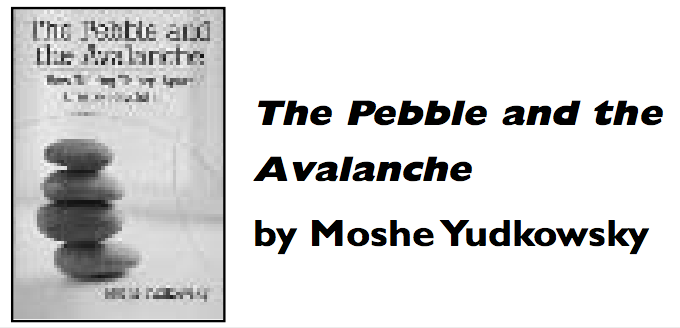
The Pebble and the Avalanche: How Taking Things Apart Creates Revolutions (Berrett-Koehler, 2005) by Moshe Yudkowsky is an interesting, readable book that examines change and develops a theory for the structure that often underlies dramatic revolutionary change. As the title implies, it uses the metaphor of the single pebble, loosened high on a mountain, that causes an avalanche as it moves downhill and picks up mass and momentum. Systems thinkers will recognize this metaphor as a reinforcing process, in which an activity escalates over time. In all systems, at a certain point, a balancing loop will kick in to limit growth and maintain stability. The author’s aim, I believe, is to provide a framework that enables readers to initiate a series of reinforcing loops to create an avalanche of revolutionary change and to disable the limits-to-growth balancing loops that can stop it.
The Concept of Disaggregation
Yudkowsky’s theory rests heavily on the idea that taking things apart (disaggregation) is the lynchpin for unleashing an avalanche of revolutionary change. Personal computers “took apart” large central computers and put the capability into the hands of many. The Internet “took apart” point-to-point messaging and created a structure that put anywhere-to-anywhere communication in the hands of the masses. Both developments dramatically changed how we interact and distributed power that once was highly centralized. Today’s World Wide Web creates an increasing number of stakeholders who may, at the extreme, spend time and money improving the capability and adding functionality “just for the sheer joy of sharing.” In a classic reinforcing process, this enthusiasm draws more people and ideas into the process, further broadening ownership, and so on. Imagine if one entity with total authority owned the Internet where would we be today?
The book goes into a number of examples, most based in technology, in which the ability to see what could be disaggregated led to revolutionary change. For example, wooden clocks were once made by carpenters, one at a time. Standardization didn’t exist; each piece in the end product was unique to a craftsman, and clocks were available only to the wealthy because of the cost. But by disaggregating the parts from the whole so that craftsmen could focus on volume production of pieces that could be easily assembled in a standard way, an industry emerged. Similarly, U. S. telephone services were once totally controlled by AT&T, a large national firm that bundled together all aspects of service. But when AT&T was broken apart (by government action) in multiple ways (companies, lines, exchanges, research, even handsets), the process led to a continuing surge of creativity, competition, cost reduction, simplicity, specialization, and synergy. Both supply and demand increased, creating explosive change to the field and myriad benefits to the world that continue today.
Separating the Parts from the Whole
The book goes on to suggest steps for devising a way to identify infrastructures that can be disaggregated; develop interfaces so that the resulting parts can work together to meet the organization’s needs; gain acceptance for change; evaluate the results; and employ feedback for continuous improvement.
Yudkowsky also offers several examples of what happens when things are forced in the other direction—toward aggregation. He points to the centralization of decision making in the Soviet system as an example of massive failure caused by moving in exactly the wrong direction. He also takes aim at Microsoft’s effort to aggregate web browser functions with their operating system, claiming that it illustrates the negative results of combining features and centralizing ownership in order to extract shortterm profit a strategy that antitrust action rightfully ended. The author believes that initiatives aimed at shortterm control are almost always misguided, because people will ultimately realize the benefits of disaggregation that are being sacrificed.
Yudkowsky’s intent is to give readers a theory they can use to think about needs and then determine how they can break apart a technology or business infrastructure in order to produce an innovative solution. Near the end, he provides a “how-to” structure for such evaluation.
Summing up, this useful book encourages looking at things differently. It focuses on substantive, not incremental, change and shows how revolutions, both technological and cultural, have created the world in which we live. The author challenges us to look forward to creating the future with the deliberateness that comes from understanding the systemic forces at play and using them to best advantage.
